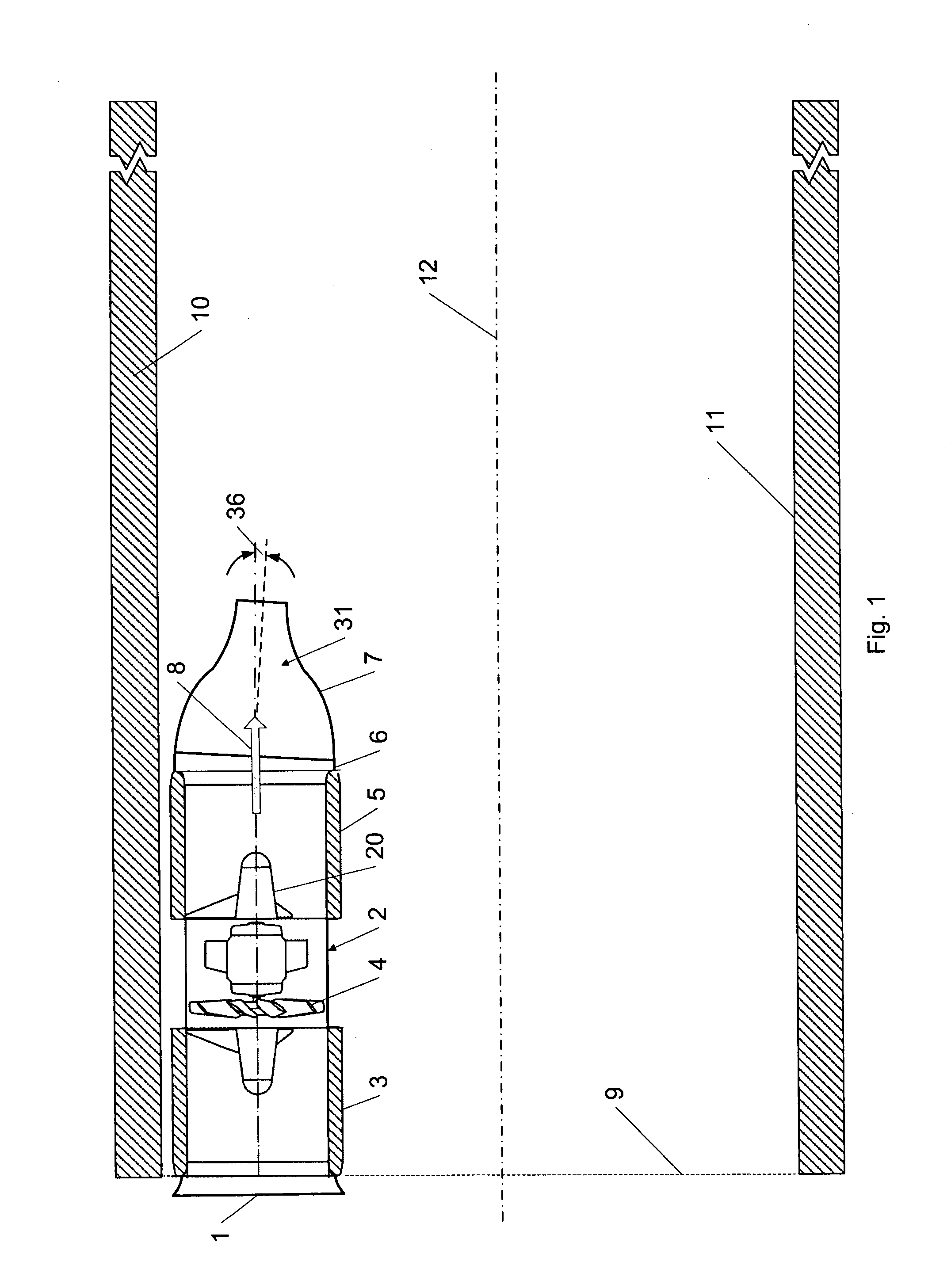Improved tunnel ventilation device
a tunnel ventilation and tunnel technology, applied in the direction of pliable tubular containers, heating types, containers, etc., can solve the problems of reducing installation efficiency, reducing the efficiency of air jet fracturing, and requiring more complex control systems
- Summary
- Abstract
- Description
- Claims
- Application Information
AI Technical Summary
Benefits of technology
Problems solved by technology
Method used
Image
Examples
first embodiment
[0184]Referring to FIG. 1, this shows a side view of this invention.
[0185]In this embodiment, a fan assembly comprising a fan (2) is installed in the vicinity of a tunnel portal (9). The airflow (8) enters the fan (2) through a bellmouth transition (1) and passes through silencers upstream (3) and downstream (5) of a fan rotor (4) which is supported by a centrebody (20). The airflow is directed through the throughbore (31) of a convergent nozzle (7) (i.e. a nozzle whose throughbore decreases in cross-sectional area, in this case from its inlet to its outlet) which may be directed at a certain angle (36) towards the centreline of the tunnel (12) and away from the tunnel soffit (10) by the installation of an angled transition piece (6). The flow angle is arranged to avoid the attachment of the jet to the tunnel floor (11).
[0186]As shown and discussed above, the nozzle converges to a cross-sectional area that is less than the area of the ductwork surrounding the fan rotor at the positi...
second embodiment
[0187]FIG. 2 presents a plan view of this invention, in which the fan assembly includes a bank of fans. This assembly may again be installed within a tunnel, in the vicinity of a portal. The airflow (8) enters the fans through a common entry plenum (13a), which serves to reduce the overall entry pressure drop to the fan assembly (ventilation device). A number of fans may not be operational due to maintenance, or serve as backup devices only, and are shut off from the airflow path using closed dampers (15). The operational fans drive the flow through open dampers (14) into a common exhaust plenum (13b). The flow is then directed through an angled transition piece (6) and into a convergent nozzle (7). It is also possible to direct the flow from the fans into multiple convergent nozzles.
[0188]Again, it should be noted here that the minimum cross-sectional area of the nozzle is less than the combined cross-sectional area of the ductwork at each fan rotor, so that the nozzle will act to ...
third embodiment
[0189]FIG. 3 presents a side view of this invention, which provides a bidirectional ventilation device that may again be installed in a tunnel. The example provided by FIG. 3 shows the airflow (8) flowing from left to right, but an opposite airflow direction from right to left is also possible through the same fan assembly. A reversible fan rotor (4) draws air through a nozzle (7) and also through open dampers (14) which allow an inlet flow that bypasses the nozzle (7). The sum of the free areas for air intake through the nozzle and the open dampers is preferably arranged to be no less than the cross-sectional area of the ducting at the fan rotor. At the discharge from the fan, closed dampers (15) direct the flow to another convergent nozzle, which discharges the air into the tunnel.
[0190]The blades in the open dampers (14) will preferably be arranged to open at certain angles, to minimise the aerodynamic pressure drop across them. Such opening angles will ensure the smooth running ...
PUM
 Login to View More
Login to View More Abstract
Description
Claims
Application Information
 Login to View More
Login to View More - R&D
- Intellectual Property
- Life Sciences
- Materials
- Tech Scout
- Unparalleled Data Quality
- Higher Quality Content
- 60% Fewer Hallucinations
Browse by: Latest US Patents, China's latest patents, Technical Efficacy Thesaurus, Application Domain, Technology Topic, Popular Technical Reports.
© 2025 PatSnap. All rights reserved.Legal|Privacy policy|Modern Slavery Act Transparency Statement|Sitemap|About US| Contact US: help@patsnap.com



